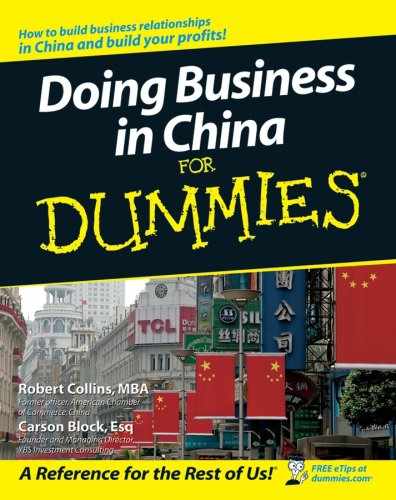Considering Ways to Get In on the Action
Many people ask themselves, “What’s the best opportunity for my company in China?” Business executives and managers may not be clear about what the opportunities are, never mind how to develop them. You should sit down and search in depth to understand the possibilities for your business.
Despite certain challenges, China is a good place for many companies. Foreign companies have the opportunity to sell into China, manufacture in China, or source products or parts from there. This section can help guide you to make better decisions about your company’s opportunities in China. We begin by looking at several of the most common possibilities.
Selling into China
Exporting your products to China is one way to enter the market, and it may be less risky for your company, too. China has an estimated 200 million middle-class consumers, and it’s adding millions of new consumers who are buying all sorts of consumer products and financial services. A fast-growing middle class, mostly in or near the coastal cities of China, is paving the way for strong selling opportunities. Retailers, financial services companies, and consumer product companies are jumping into the market to aggressively expand their business.
Retailing in China is taking off like a rocket. Soon, sales are expected to reach US$1 trillion. China has more than 20 million retail outlets now. New hypermarkets, supermarkets, department stores, and electronics, appliance, and home décor shops are popping up everywhere in eastern China (see Chapter 14 for details on retail markets).
With the explosion in retailing, the China market is witnessing more consumer products and brands (prestigious foreign brands are particularly popular). New types of consumers are emerging with different needs and wants. The markets are becoming more segmented as consumer buying behavior differs from place to place.
Financial services firms are also starting to enjoy some good times. Foreign banking institutions are expanding their capabilities and services. Foreign insurance companies are starting to gain local market share by providing much-needed protection for Chinese consumers. And because the Chinese savings rate is a whopping 50 percent, financial services companies in particular are salivating at the opportunity to tap into Chinese household savings!
Selling to businesses in China is another huge opportunity. Just about every Fortune Global 1000 firm is now doing business there. Thousands of small- and medium-sized foreign companies are present, too. Opportunities for sales of business services to foreign companies operating there include management consulting, human resources, accounting, legal services, real estate, and so on.
Manufacturing and sourcing
Foreign investors have made China the world’s factory. With a good supply of labor (and other lower costs) and high-quality production capabilities, China continues to attract foreign manufacturers. Because China is highly competitive on making products at a lower cost, many foreign companies look to source parts and components there. Some large foreign multinationals are moving their global procurement centers to China. As China moves up the food chain into higher-value products, more companies are procuring higher-quality products and components from China. Chapter 13 can tell you more about manufacturing.
In the meantime, China has made massive investments in the country’s infrastructure. New airports, highways, bridges, tunnels, trains, and ports have sprung up across eastern China. This brand-new infrastructure has the potential to allow transportation companies to develop more sophisticated support services for logistics and express carriers, air cargo, and sea freight. Third-party logistics services in China are seeing explosive growth in supporting manufacturing-driven export services. (However, logistics and distribution are still highly fragmented and inefficient, as we discuss in Chapter 14.)
The sourcing capabilities aren’t just for the benefit of large multinational companies. Small- and medium-sized companies are jumping on the bandwagon, too. They can now get access to high-quality products and components to stay internationally competitive. They can also avoid middlemen or buyer’s agents to keep their prices even lower. Many small- and medium-sized companies are trying to secure their future by lowering costs while maintaining high quality standards. See Chapter 12 for details on sourcing.
